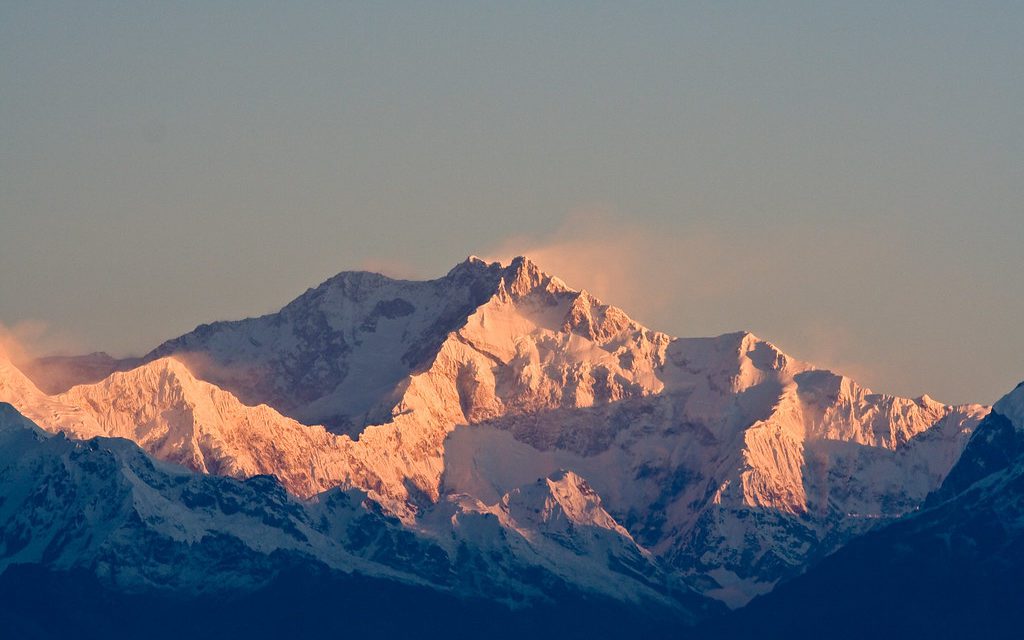 Mountaineers and trekkers have swarmed into the Himalayas region for the Mount Everest spring 2023 climbing season, among them, a handful of climbers attempting to break a few records.
Mountaineers and trekkers have swarmed into the Himalayas region for the Mount Everest spring 2023 climbing season, among them, a handful of climbers attempting to break a few records.
Two women plan to break the speed record to summit all 14 of the world’s 8,000+ meters (26,242+ feet) mountains. There’s also a Wyoming, U.S., sports medicine doctor who will attempt to reach the peak of Mount Everest 15 days faster than anyone before. And then there’s a Nepalese Sherpa guide who will try to reach the apex of the planet’s tallest peak for the 27th time – more than anyone else has.
But to say there will be challenges is an understatement. Altitude mountain sickness, bad falls, twisted ankles, frostbite, gastrointestinal trouble, snow blindness, avalanches and many other conditions will test climbers and trekkers at every step.
Last year, a record-breaking number of climbing permits were issued, and we conducted a record-breaking number of rescue operations. The 2023 spring climbing season will set new records.
Record-Breaking Contenders
Kristine Harila, a relative newcomer to mountaineering, and Allie Pepper, a veteran high-altitude climber, are each attempting to summit the 14 8,000+ meters (26,242+ feet) faster than ever. Nims Purja holds the current record of six months and six days, shattering the old record of seven years and 310 days.
Pepper’s attempt will be her first and is distinct because she won’t rely on supplemental oxygen. Most mountaineers use supplemental oxygen since oxygen content decreases at higher altitudes making breathing difficult. “The fastest time to complete this challenge is just under 16 years by Ed Viesturs. I aim to complete my challenge in just over two years,” Pepper said.
Harila attempts to surpass the speed record to summit all 14 tallest mountains. She was six months in and two summits away from making history last year when the Chinese government’s strict zero-COVID policy meant it would be difficult for visitors like Harila to enter the country. Undeterred, she plans to do things a little differently this go-round. “I’m going to use a helmet this time,” Harila laughs, “because there have been some close calls.”
And as if climbing all of the world’s 8,000+ meter mountains wasn’t tricky enough, Harila, like Pepper, plans to climb without supplemental oxygen. “I know this is stupid to say,” Harila confesses, “but I didn’t feel challenged enough last year. The mountains and climbing are challenging in the moment, but I want to try something else. It’s the challenge that keeps me motivated.”
Despite her unaided inhalation aspirations, Harila says she will bring oxygen if bad weather continues. She needs to move more quickly to take advantage of a climbing window or avoid a potentially dangerous situation.
Zeroing in on one summit, Dr Joe McGinley wants to smash the previous speed record of 35 days to summit Mount Everest and, instead, reach the peak in 10 days, according to a report. McGinley’s taking a health-science approach that could result in a medical research publication. For months, he’s been simulating sleeping and exercising at 6,100 meters (20,000+ feet) using an oxygen-restricting mask.
And Kami Rita, a Nepalese Sherpa guide, plans to break 26 successful Mount Everest ascents, a global record he already holds, according to an article. “I will climb Everest for the 27th time and my climbing date is tentatively in the third week of May.”
On the Ground in Nepal
Global Rescue medical and rescue experts are already on the ground in Nepal to arrange rescue operations whenever necessary, including helicopter and ambulance transports, hospital admissions and looking after individuals admitted to a hospital for care.
As an experienced high-altitude mountaineer with ascents in the Himalayas, Europe, South America and Africa, I will be on the on-the-ground operations team handling 200 high-altitude rescues or more.
An “average day” during a Himalayan deployment is anything but typical. During the two-month spring Mount Everest climbing season, several rescue operations will be performed each day, keeping the deployment team and me busy from before dawn until nearly midnight. The busiest time is the two-week Mount Everest summit window, when the medical and rescue operations team performs up to 25 rescues a day.
After a rescue, we often meet the individual when they arrive at the medical facility and help them navigate the initial process. We have close relationships with multiple hospitals. We conduct in-hospital visits and monitor medical reports remotely with our U.S.-based physicians with high-altitude illness expertise. All of this ensures that recovery is as fast and effective as possible. If the individual requires prolonged treatment, our deployed team may assist them in getting home.
Avalanches
The deadly avalanche striking a Himalayan mountain pass in northeast India earlier this month is a bracing reminder for climbers and trekkers of the dangerous nature of snow slides. “Avalanches are one of the deadliest things that can happen on a mountain, and they’re one of the greatest risks a climber or trekker can face,” said Dan Richards, CEO of Global Rescue. “Preparing for them is a key element of the Global Rescue operations team activity before every deployment to the Himalayas.”
Rescue operations after a significant snow slide are inherently more dangerous since there’s an elevated chance of more avalanches, just like aftershocks following an earthquake. Because additional avalanche risk is a factor, we must determine the feasibility of ground or airborne rescue where snow and ice are unstable.
To do this, we rely on reports from local expedition groups, avalanche forecasting, and the knowledge and experience of guides and other mountaineers.
But avalanche forecasts aren’t as reliable as weather predictions, and even the most seasoned guides don’t have a crystal ball (or snow globe) to predict the future. This is why climbers need to adhere to the instruction of their guides and attempt ascents and descents during the time of day when avalanche risk is lowest. And it’s a non-negotiable for every climber to wear an avalanche transceiver in case things get really bad for them and to carry a probe and shovel in case things get bad for someone else.
Records are meant to be broken. Climbing the world’s highest mountains included. But that notoriety should never come at the cost of unnecessary risk. Luckily, mountaineers and trekkers attempting to surpass personal bests or break records this season know what they’re doing. But if they get in trouble, medical and rescue support is available.
Written by: Dan Stretch
BIO:
Dan Stretch is a Global Rescue operations manager based in Nepal during the Mount Everest climbing season. He has coordinated hundreds of evacuations and crisis response operations. He is an experienced high-altitude mountaineer with ascents in the Himalayas, Europe, South America and Africa. He graduated from the University of Hertfordshire with a BS in Paramedic Science.
















